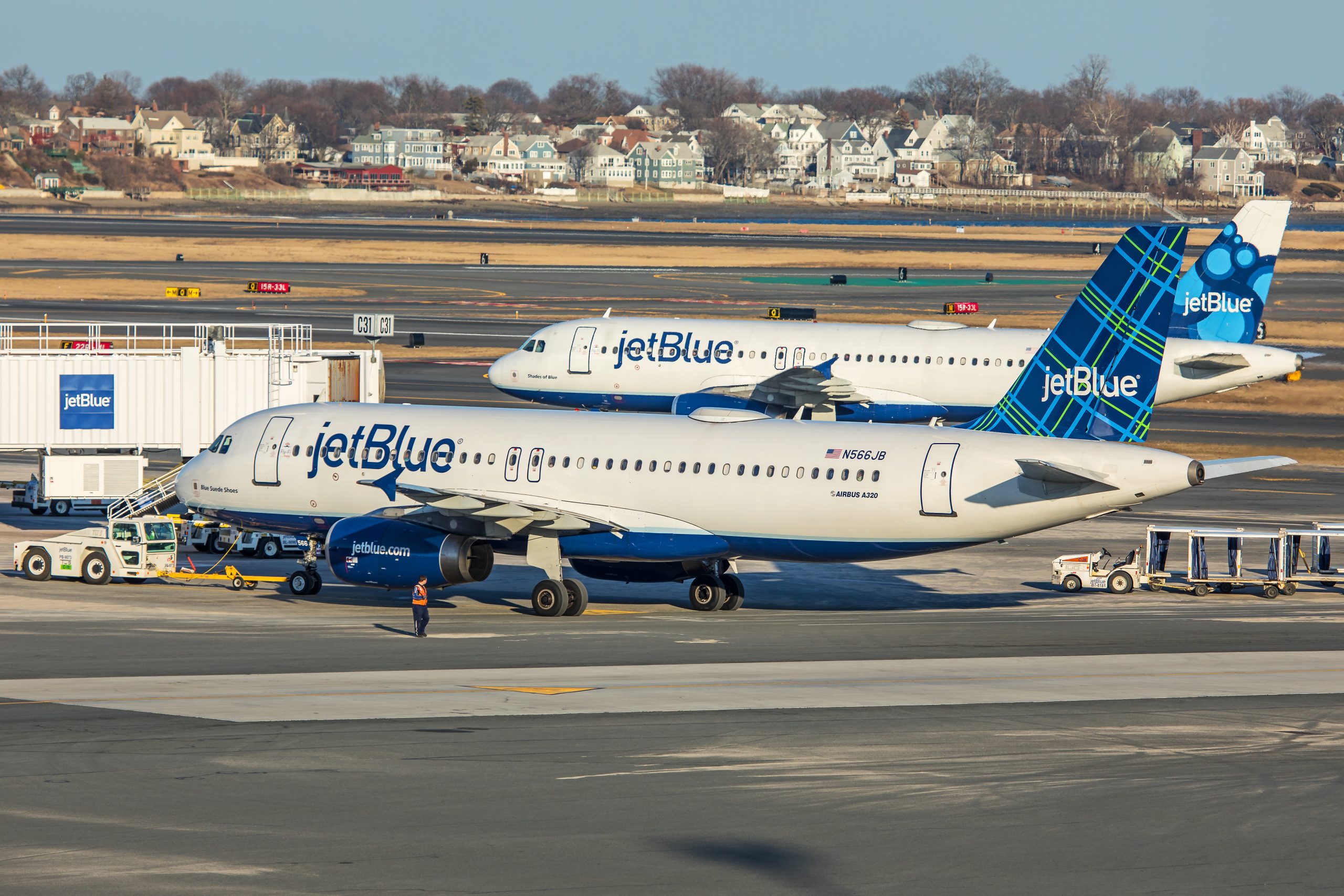
Hawaiian Slated to Return Grounded A321neos to Service
Hawaiian Airlines says it expects to return all 18 of its Airbus A321neo aircraft to revenue service in the coming…

A Lufthansa 747-8i in the carrier’s new livery (Photo: AirlineGeeks | Fabian Behr)
South Africa has reopened its borders to international leisure passengers for the first time since March when the COVID-19 pandemic fully impacted worldwide aviation. A Lufthansa 747 from Frankfurt was the first aircraft to land at Johannesburg’s O.R. Tambo International airport (JNB) on Thursday morning. Though foreign aircraft carrying out repatriation flights of citizens and residents have landed in South Africa since the March lockdown, LH572 was the first commercially scheduled international service to land in the country in nearly seven months. Swiss, Emirates, Ethiopian Airlines and Air France-KLM are also reported to resume services to South Africa this month.
The president of South Africa Cyril Ramaphosa announced the reopening in mid-September saying: “We are ready to open our doors again to the world and invite travelers to enjoy our mountains, our beaches, our vibrant cities, and our wildlife game parks in safety and confidence.” The country’s embassies and consulates have recommenced issuing visas and South Africans will also be permitted to travel abroad. However, Mr. Ramaphosa warned that travel to and from certain countries may be restricted “based on the latest scientific data we can get on those countries”.
As with a number of other countries, there will be restrictions on where travelers can arrive from and which airports in South Africa will be able to manage international services. In addition to JNB, Cape Town International and King Shaka outside Durban will be the only airports allowed to accept international flights. Business Insider South Africa reported, “Travellers will have to present, on arrival, the result of a negative coronavirus test less than 72 hours old. If they cannot do so, they ‘will be required to remain in mandatory quarantine at their own cost’.” Airlines must also ensure that any travelers they accept for carriage have appropriate travel insurance to cover medical expenses they may occur in the republic.
On Wednesday South African Minister of International Relations Naledi Pandor announced, “We’ve agreed that we will gradually open our borders and ports of entry of international travelers, primarily in the first instance for business and some leisure travelers, and other aspects of travel such as investors coming into South Africa [and] sea crews that need to spend a short time, having docked in our ports. So we still are in a restricted domain, but we are gradually opening up.” Mr. Pandor also released a red-list of countries whose citizens would not be able to arrive in South Africa on non-business-related travel.
Amongst the high profile names of countries on South Africa’s red-list are the United Kingdom, the United States of America, France and The Netherlands. There was initial confusion when Brazil was found to not be on the list but this was rectified and the South American country is now added. The Business Insider noted: “All countries on the African continent automatically fall outside the high-risk category so tourists will be allowed to travel to and from those countries regardless of their SARS-CoV-2 statistics.”
The South African government will review the red-list every two weeks and assess the risk based on the country’s own COVID-19 statistics. Though the specific criteria used to measure a country’s risk level was not made clear the broad assessment is that data from a seven-day period will be used and those countries with significantly higher levels of positive cases and deaths than South Africa will be rated as high risk and added to the list.
John has always had a passion for aviation and through a career with Air New Zealand has gained a strong understanding of aviation operations and the strategic nature of the industry. During his career with the airline, John held multiple leadership roles and was involved in projects such as the introduction of both the 777-200 and -300 type aircraft and the development of the IFE for the 777-300. He was also part of a small team who created and published the internal communications magazines for Air New Zealand’s pilots, cabin crew and ground staff balancing a mix of corporate and social content. John is educated to postgraduate level achieving a masters degree with Distinction in Airline and Airport Management. John is currently the course director of an undergraduate commercial pilot training programme at a leading London university. In addition he is contracted as an external instructor for IATA (International Air Transport Association) and a member of the Heathrow Community Fund’s ‘Communities for Tomorrow’ panel.
Receive a daily dose of the airline industry's top stories along with market insights right in your inbox.

Hawaiian Airlines says it expects to return all 18 of its Airbus A321neo aircraft to revenue service in the coming…

On Tuesday, JetBlue announced that it has adjusted its annual revenue forecast. The carrier announced that its revenue will be…

Royal Air Maroc and Safran have deepened their collaboration in aircraft engine maintenance. In celebration of its 25th anniversary, Safran…



